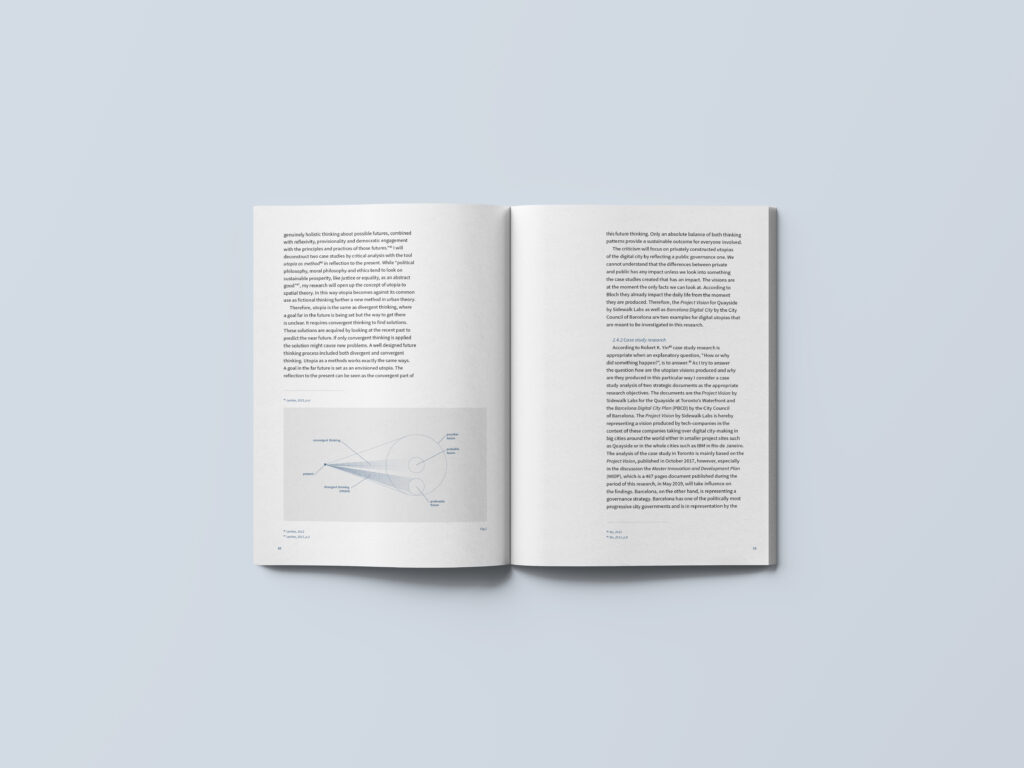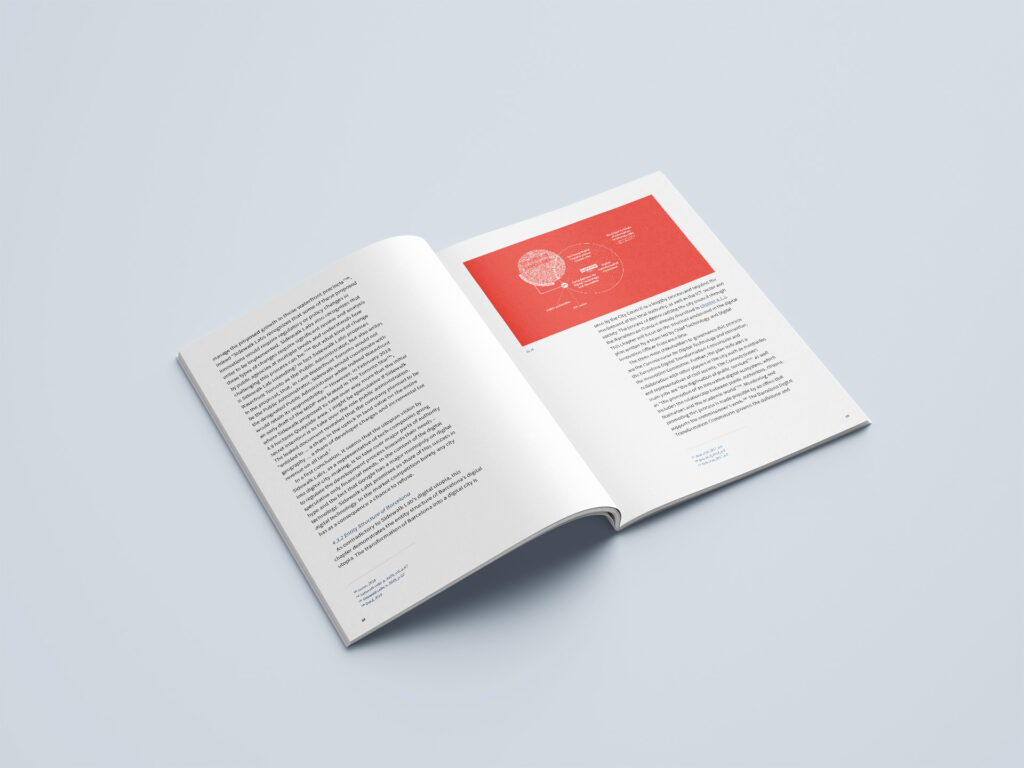Urban Utopia: Disruptive Visions of the Digital City between Toronto and Barcelona
If we consider the city as a concept1, ownership does not necessarily has to be a question of property, rather represent the ideas of its citizens. Richard Sennett argues that “the forms of the built environment are the product of the maker’s will”2. However, who are the makers of the digital city and what is their will? Because it seems that the digital city has a financial motivation, this thesis criticises urban utopias by big tech companies, that take over digital city-making. I argue that it indicates a fundamental disruption in the envisioning of the future urban. Urban utopia becomes the convenient means of staging needs in neoliberal Silicon Valley and thus a central force of late-capitalism to sell digital products. These visions sit squarely within the definition of so-called solutionism3 and the staging of technological desire feeds into the neoliberal ‘Californian Ideology’4. This research begins by deconstructing the approaches and structures of the makers behind future urban visions in two case studies: Barcelona Digital City Plan by the City Council of Barcelona and the Project Vision by Sidewalk Labs for Quayside at Toronto’s Waterfront. I further argue that the digitalisation is a product of liberalising technology and the centralisation of economic dynamics in cities.


See also: Dittrich, Moritz (2019) Who owns the city? In: The Matter of Architecture. Royal College of Art. London.
- See: urban in: Lefebvre, 1996 or cité in: Sennett, 2019 ↩︎
- Sennett 2019, 2 ↩︎
- Morozov, 2013 ↩︎
- Barbrook & Cameron, 1996 ↩︎